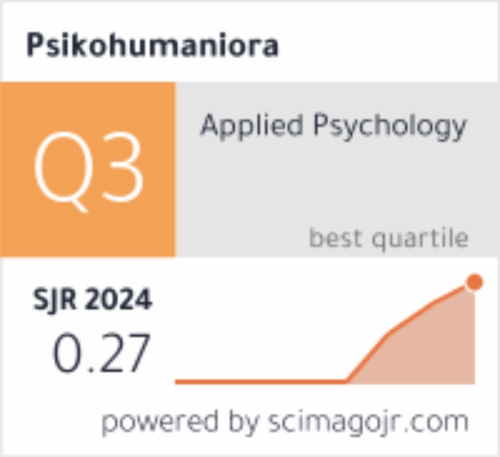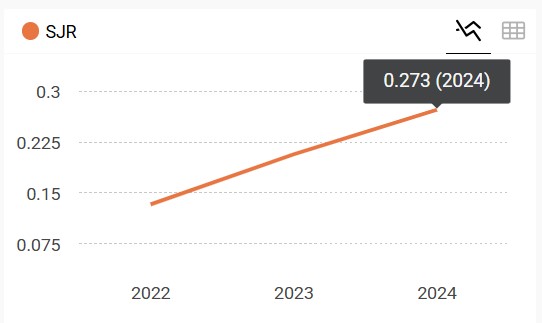Progressive view on social justice: Netizen opinions about social justice warrior
DOI:
https://doi.org/10.21580/pjpp.v5i1.5250Keywords:
Social Justice Warrior, SJW, sentiment analysis, content analysisAbstract
Social justice warrior (SJW) is a pejorative term for individuals who fight for equality, environment, and gender. Because their progressive morals radically differ from the predominant values, the so-called social justice warriors spark controversies. This study aimed to describe netizens’ opinions about SJW and describe the dynamics of conflict or support in more detail. Text mining and opinion coding were used to elicit research data. The opinions that we gathered were analyzed in 2 stages: sentiment analysis and content analysis. The results of sentiment analysis are negative (445), neutral (86), and positive (90). Content analysis of the negative opinions showed the characteristics of sarcastic, rude, critical, and contemptuous (mocking/disrespecting). The style of positive sentiments (comments congruent with the phenomena) is divided into supportive, empathic, and motivational opinions. Negative opinions are more dominant because of netizens’ self-acceptance, the effects of informal social control in cyberspace, SJW’s presumed social non-compliance, and doubts of objectivity. Positive opinions can be explained by criticism of social contract theory, namely the demand to be more supportive of minority groups, sensitivity, and empathy (the ability to feel other groups' social conditions and environmental conditions).
Downloads
References
Adelman, M., Rosenberg, K. E., & Hobart, M. (2016). Simulations and social empathy. Violence Against Women, 22(12), 1451–1462. https://doi.org/10.1177/1077801215625850
Auxier, B. E., & Vitak, J. (2019). Factors motivating customization and echo chamber creation within digital news environments. Social Media + Society, 5(2), 205630511984750. https://doi.org/10.1177/2056305119847506
Bernard, M. E. (2014). The strength of self-acceptance: Theory, practice and research. Berlin: Springer.
Brauer, M., & Chekroun, P. (2005). The relationship between perceived violation of social norms and social control: Situational factors influencing the reaction to deviance. Journal of Applied Social Psychology, 35(7), 1519–1539. https://doi.org/10.1111/j.1559-1816.2005.tb02182.x
Charles, L., Harper, J., & Templeton, J. (2005). Spiritual information: 100 perspectives on science and religion. Templeton Foundation Press.
Cosmides, L., & Tooby, J. (2008). Can a general deontic logic capture the facts of human moral reasoning? How the mind interprets social exchange rules and detects cheaters. In Moral psychology, Vol 1: The evolution of morality: Adaptations and innateness (pp. 53–119). Cambridge: Boston Review.
Craig, E. (2012). From security to justice? The development of a more justice-oriented approach to the realisation of European minority rights standards. Netherlands Quarterly of Human Rights, 30(1), 40–64. https://doi.org/10.1177/016934411203000103
Day, V. (2015a). SJWs Always Double Down: Anticipating the Thought Police. Castalia House.
Day, V. (2015b). SJWs always lie: Taking down the thought police. Castalia House.
Deakin, J., Taylor, E., & Kupchik, A. (2018). The Palgrave international handbook of school discipline, surveillance, and social control. Springer.
Dorsey, J. (2019). Rate Limit. https://developer.twitter.com/en/docs/twitter-api/v1/rate-limits
Driver, J. (2011). Consequentialism. Routledge.
Fischer, A., & Giner-Sorolla, R. (2016). Contempt: Derogating others while keeping calm. Emotion Review, 8(4), 346–357. https://doi.org/10.1177/1754073915610439
Frank, M. G., Matsumoto, D., & Hwang, H. C. (2015). Intergroup emotions and political violence: The ANCODI hypothesis. In J. P. Forgas, K. Fiedler, & W. D. Crano (Eds.), Sydney symposium of social psychology: Vol. 17. Social psychology and politics (pp. 173–190). UK: Psychology Press.
Garimella, K., Morales, G. D. F., Gionis, A., & Mathioudakis, M. (2018). Quantifying controversy on social media. ACM Transactions on Social Computing, 1(1), 1–27. https://doi.org/10.1145/3140565
Garmendia, J. (2018). Irony. Cambridge University Press.
Goldenberg, A., Halperin, E., van Zomeren, M., & Gross, J. J. (2016). The process model of group-based emotion. Personality and Social Psychology Review, 20(2), 118–141. https://doi.org/10.1177/1088868315581263
Greene, J. D. (2015). The rise of moral cognition. Cognition, 135, 39–42. https://doi.org/10.1016/j.cognition.2014.11.018
Gundy, A. (2014). Feminist theory, crime, and social justice. Elsevier Inc.
Haidt, J. (2001). The emotional dog and its rational tail: A social intuitionist approach to moral judgment. Psychological Review, 108(4), 814–834. https://doi.org/10.1037/0033-295X.108.4.814
Hales, S. D. (2009). Moral relativism and evolutionary psychology. Synthese, 166(2), 431–447.
Haller, M. B., Solhjell, R., Saarikkomäki, E., Kolind, T., Hunt, G., & Wästerfors, D. (2018). Minor harassments: Ethnic minority youth in the Nordic countries and their perceptions of the police. Criminology & Criminal Justice, 20(1), 3–20. https://doi.org/10.1177/1748895818800744
Held, V. (1993). Feminist morality: Transforming culture, society, and politics. University of Chicago Press.
Huang, R. (2018). RQDA: R-based Qualitative Data Analysis (Version 0.3-1).
Hutcherson, C. A., & Gross, J. J. (2011). The moral emotions: A social–functionalist account of anger, disgust, and contempt. Journal of Personality and Social Psychology, 100(4), 719–737. https://doi.org/10.1037/a0022408
Jones, C., Trott, V., & Wright, S. (2019). Sluts and soyboys: MGTOW and the production of misogynistic online harassment. New Media & Society, 22(10), 1903–1921. https://doi.org/10.1177/1461444819887141
Kim, N., & Wojcieszak, M. (2018). Intergroup contact through online comments: Effects of direct and extended contact on outgroup attitudes. Computers in Human Behavior, 81, 63–72. https://doi.org/10.1016/j.chb.2017.11.013
Krasnow, M. M. (2017). An evolutionarily informed study of moral psychology. In Moral Psychology (pp. 29–41). Springer.
Lamm, C., & Majdandžić, J. (2015). The role of shared neural activations, mirror neurons, and morality in empathy – A critical comment. Neuroscience Research, 90, 15–24. https://doi.org/10.1016/j.neures.2014.10.008
Leong, F. T. L., Pickren, W. E., & Vasquez, M. J. T. (2017). APA efforts in promoting human rights and social justice. American Psychologist, 72(8), 778–790. https://doi.org/10.1037/amp0000220
Liu, B. (2015). Sentiment analysis. Cambridge: Cambridge University Press.
Madon, N. S., Murphy, K., & Sargeant, E. (2017). Promoting police legitimacy among disengaged minority groups: Does procedural justice matter more? Criminology & Criminal Justice, 17(5), 624–642. https://doi.org/10.1177/1748895817692849
Malloch, T. R. (2010). Spiritual capital and practical wisdom. Journal of Management Development, 29(7/8), 755–759. https://doi.org/10.1108/02621711011059194
Mills, C. (1987). The racial contract. Cornell University Press.
Mudrack, P. E., & Mason, E. S. (2019). Moral reasoning and its connections with machiavellianism and authoritarianism: The critical roles of index choice and utilization. Business & Society, 58(4), 779–812. https://doi.org/10.1177/0007650316681556
Nugier, A., Niedenthal, P. M., Brauer, M., & Chekroun, P. (2007). Moral and angry emotions provoked by informal social control. Cognition & Emotion, 21(8), 1699–1720. https://doi.org/10.1080/02699930601124738
Rawls, J. (1973). Theory of Justice. Oxford University.
Rodriguez, M. A., Xu, W., Wang, X., & Liu, X. (2015). Self-acceptance mediates the relationship between mindfulness and perceived stress. Psychological Reports, 116(2), 513–522. https://doi.org/10.2466/07.PR0.116k19w4
Russell, P. S., Piazza, J., & Giner-Sorolla, R. (2013). CAD revisited: Effects of the word moral on the moral relevance of disgust (and other emotions). Social Psychological and Personality Science, 4(1), 62–68. https://doi.org/10.1177/1948550612442913
Sabbagh, C., & Schmitt, M. (2016). Past, present, and future of social justice theory and research. In Handbook of social justice theory and research (pp. 1–11). Springer.
Schäfer, M., Haun, D. B. M., & Tomasello, M. (2015). Fair is not fair everywhere. Psychological Science, 26(8), 1252–1260. https://doi.org/10.1177/0956797615586188
Schejter, A. M., & Tirosh, N. (2015). “Seek the meek, seek the just”: Social media and social justice. Telecommunications Policy, 39(9), 796–803. https://doi.org/10.1016/j.telpol.2015.08.002
Segal, E. A. (2011). Social empathy: A model built on empathy, contextual understanding, and social responsibility that promotes social justice. Journal of Social Service Research, 37(3), 266–277. https://doi.org/10.1080/01488376.2011.564040
Shweder, R. A., Much, N. C., Mahapatra, M., & Park, L. (1997). The “big three” of morality (autonomy, community, divinity) and the “big three” explanations of suffering. - PsycNET. In A. M. Brandt & P. Rozin (Eds.), Morality and health (pp. 119–169). UK: Taylor & Francis, Routledge.
Siswanto, Y. (2014). In-group favoritsm pada mahasiswa aktivis ditinjau dari konstrual diri independen-interdependen. Jurnal Ilmiah Psikologi Terapan, 2(1), 184–198. https://doi.org/10.22219/jipt.v2i1.1779
Smith, M. B., & Pickren, W. E. (2018). The American Psychological Association in relation to social responsibility and social justice. In 125 years of the American Psychological Association. (pp. 359–391). American Psychological Association. https://doi.org/10.1037/0000050-012
Sneddon, A. (2011). Like-minded: Externalism and moral psychology. MIT Press.
Sowell, T. (2001). The quest for cosmic justice. Simon and Schuster.
Strimling, P., & Frey, S. (2018). Emergent cultural differences in online communities’ norms of fairness. Games and Culture, 15(4), 394–410. https://doi.org/10.1177/1555412018800650
Susilawati, I. R., & Hidayat, R. (2019). Dilema sosial: Representasi sosial tentang pajak pada Aparatur Sipil Negara. Jurnal Psikologi Sosial, 17(2), 65–74. https://doi.org/10.7454/jps.2019.10
Vairetti, C., Martínez-Cámara, E., Maldonado, S., Luzón, V., & Herrera, F. (2020). Enhancing the classification of social media opinions by optimizing the structural information. Future Generation Computer Systems, 102, 838–846. https://doi.org/10.1016/j.future.2019.09.023
Voorhees, G. A., Call, J., & Whitlock, K. (2012). Dungeons, dragons, and digital denizens: The digital role-playing game. Bloomsbury Publishing.
Xu, W., Oei, T. P., Liu, X., Wang, X., & Ding, C. (2016). The moderating and mediating roles of self-acceptance and tolerance to others in the relationship between mindfulness and subjective well-being. Journal of Health Psychology, 21(7), 1446–1456. https://doi.org/10.1177/1359105314555170
Zhao, Y., An, Y., Sun, X., & Liu, J. (2019). Self-acceptance, post-traumatic stress disorder, post-traumatic growth, and the role of social support in Chinese rescue workers. Journal of Loss and Trauma, 25(3), 264–277. https://doi.org/10.1080/15325024.2019.1672935
Downloads
Published
How to Cite
Issue
Section
License
The copyright of the accepted article shall be assigned to the publisher of the journal. The intended copyright includes the right to publish the article in various forms (including reprints). The journal maintains the publishing rights to published articles.
In line with the license, authors and any users (readers and other researchers) are allowed to share and adapt the material only for non-commercial purposes. In addition, the material must be given appropriate credit, provided with a link to the license, and indicated if changes were made. If authors remix, transform, or build upon the material, authors must distribute their contributions under the same license as the original.



